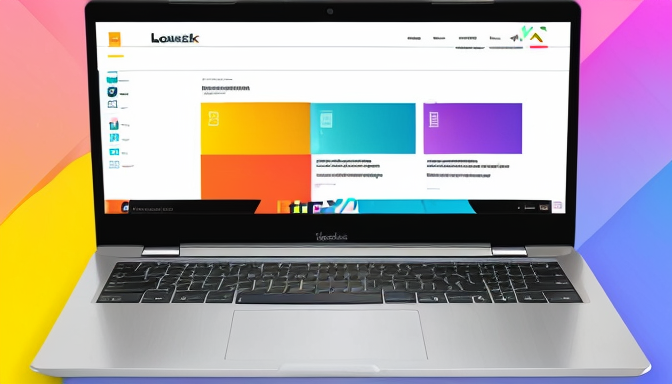Welcome to the vibrant world of Joomla! If you’re looking to create a stunning website, you’ve landed in the right place. Joomla is not just a content management system; it’s a powerful platform that allows you to unleash your creativity. But wait, before diving headfirst into the design process, let’s take a moment to explore some essential tips that can elevate your Joomla experience. Think of these tips as the secret sauce that transforms a good website into a great one.
The backbone of Joomla’s design lies in its templating system. This framework is like a canvas where you can paint your ideas. With a plethora of templates available, you can customize your site to reflect your brand’s identity. Imagine having the flexibility to switch colors, layouts, and features with just a few clicks! It’s like having a wardrobe full of outfits for every occasion. But remember, while customization is key, maintaining a cohesive look is essential for user experience.
Now that you understand the framework, let’s talk about best practices. First and foremost, responsive design is a must. With more users accessing websites from mobile devices, your Joomla site should look fantastic on any screen size. Think of it as a chameleon that adapts to its environment. Additionally, user navigation should be intuitive. A well-structured menu can guide visitors effortlessly, ensuring they find what they need without frustration.
Lastly, optimizing performance is crucial. A slow website can drive users away faster than a speeding bullet! Use tools to compress images and minimize code to enhance loading times. Remember, a seamless experience keeps visitors coming back for more!
Understanding Joomla’s Design Framework
When diving into the world of Joomla, it’s crucial to grasp its design framework. This framework is the backbone of your website, allowing you to create stunning layouts that truly reflect your brand. At the heart of Joomla’s flexibility lies its templating system. Think of templates as the canvas on which you paint your website; they provide a structure for your design while allowing for endless customization.
To get the most out of Joomla, you should familiarize yourself with the backend settings. Here’s a quick guide to what you need to manage:
- User Roles: Assign permissions to users, ensuring that only authorized personnel can modify content or settings.
- Menus: Create intuitive navigation that guides visitors seamlessly through your site.
- Content Management: Organize articles, images, and other media effectively to keep your site fresh and engaging.
- System Configurations: Optimize settings for performance, security, and SEO, making sure your site runs smoothly.
By mastering these elements, you’re not just building a website; you’re crafting a user experience that captivates and retains visitors. Remember, a well-structured backend translates to a flawless frontend. So, take the time to explore Joomla’s capabilities, and let your creativity shine through!

Best Practices for Joomla Website Design
When diving into the world of Joomla website design, it’s crucial to grasp the best practices that will elevate your site from ordinary to extraordinary. Think of your website as a canvas; the right strokes can create a masterpiece. One of the key elements to consider is responsive design. In today’s mobile-driven world, your site needs to look stunning on any device. Have you ever tried to navigate a site that wasn’t mobile-friendly? It’s like trying to read a book with blurry pages—frustrating and uninviting!
Next, let’s talk about user navigation. A well-structured menu can be the difference between a visitor staying to explore or bouncing away in seconds. Ensure your menus are intuitive and categorized logically. You want your visitors to feel like they’re on a guided tour, not lost in a maze. Consider using dropdown menus for subcategories to keep things tidy and organized.
Performance optimization is another cornerstone of effective Joomla design. A slow-loading site is like a traffic jam on the information superhighway—it’s just not going to cut it! Use tools like caching and image optimization to enhance speed. Remember, every second counts! A well-optimized site not only improves user experience but also boosts your SEO rankings.
Lastly, don’t overlook the importance of managing your backend settings effectively. Understanding user roles, menus, and content configurations can streamline your workflow. For instance, setting up proper user roles ensures that team members have the right access levels, which is essential for maintaining security and efficiency.
| Best Practice | Description |
|---|---|
| Responsive Design | Ensure your site is mobile-friendly and looks great on all devices. |
| User Navigation | Create intuitive menus to enhance user experience and reduce bounce rates. |
| Performance Optimization | Utilize caching and image optimization for faster loading times. |
| Backend Management | Manage user roles and content settings for a streamlined workflow. |
Frequently Asked Questions
- What is Joomla?
Joomla is a powerful content management system (CMS) that allows you to build websites and online applications. It’s user-friendly, making it perfect for both beginners and experienced developers!
- How do I customize my Joomla website?
You can customize your Joomla site by using its templating system. This allows you to change layouts, colors, and styles easily, giving your site a unique touch!
- Is Joomla mobile-friendly?
Absolutely! Joomla supports responsive design, ensuring your website looks great on any device, from desktops to smartphones. It’s like having a website that fits in your pocket!
- What are some best practices for Joomla design?
Focus on user navigation, use high-quality images, and optimize performance. These elements work together like a well-oiled machine, enhancing the overall user experience!
- Can I add extensions to my Joomla site?
Yes! Joomla has a vast library of extensions that can add functionality to your site, from SEO tools to social media integration. It’s like adding superpowers to your website!